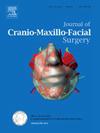A virtual reality training program to enhance surgical skills in dental education: Prospective comparative analysis of students and residents
IF 2.1
2区 医学
Q2 DENTISTRY, ORAL SURGERY & MEDICINE
引用次数: 0
Abstract
Virtual reality (VR) has emerged as a promising tool for dental education. In addition to reducing material consumption, VR systems enable objective, data-driven performance evaluations through integrated feedback mechanisms. The study aims to determine whether repeated practice on a VR simulator leads to measurable improvements in specific surgical skills. This prospective cross-sectional study investigated the impact of repeated virtual reality (VR) simulator training on osteotomy performance. Participants included 32 dental students (ST) in the 5th semester and seven oral and maxillofacial surgery (OMFS) residents (RE) from a university hospital in Germany. Each participant completed an initial assessed osteotomy of tooth 38 on a VR simulator after a brief introductory task. They then performed four independent practice rounds before completing a final assessed osteotomy. Performance parameters such as bone removal, procedure duration and adjacent tooth damage, were recorded. A post-training questionnaire assessed subjective perceptions, prior experience, and video game familiarity. Both students and residents showed statistically significant improvements in procedure time (ST: p < 0.001; RE: p = 0.004) and reduction of iatrogenic bone damage (p < 0.001) after training. Students demonstrated a steeper learning curve for time reduction (p < 0.001) and lingual bone preservation (p < 0.001), whereas residents improved more notably in avoiding damage to adjacent teeth (p < 0.001). Participants with prior video game experience completed tasks more quickly (p < 0.001) and with less adjacent bone removal (p < 0.03) during the final exercise. Residents rated the training more favorably overall, especially regarding perceived skill improvement, realism of tooth removal and desire for further VR-based practice. VR-based training significantly enhances technical performance in simulated oral surgery tasks, regardless of prior clinical experience. Its integration into dental education can support individualized learning, objective evaluation, and efficient skill improvement. Future studies should investigate the long-term retention of skills and real-world clinical transferability.
提高牙科教育中外科技能的虚拟实境训练计划:学生与住院医师的前瞻性比较分析。
虚拟现实(VR)已经成为一种有前途的牙科教育工具。除了减少材料消耗外,VR系统还通过综合反馈机制实现客观、数据驱动的绩效评估。该研究旨在确定在VR模拟器上重复练习是否会导致特定手术技能的可测量改善。这项前瞻性横断面研究调查了重复虚拟现实(VR)模拟器训练对截骨术表现的影响。参与者包括32名第五学期的牙科学生(ST)和7名来自德国一所大学医院的口腔颌面外科(OMFS)住院医师(RE)。在简短的介绍任务后,每个参与者都在VR模拟器上完成了38号牙的初始评估截骨。在完成最后评估的截骨手术之前,他们进行了四次独立的练习。记录除骨、手术时间和邻牙损伤等性能参数。培训后的问卷评估了主观感受、之前的经验和对电子游戏的熟悉程度。学生和住院医生在手术时间上都有统计学上的显著改善(ST: p
本文章由计算机程序翻译,如有差异,请以英文原文为准。
求助全文
约1分钟内获得全文
求助全文
来源期刊
CiteScore
5.20
自引率
22.60%
发文量
117
审稿时长
70 days
期刊介绍:
The Journal of Cranio-Maxillofacial Surgery publishes articles covering all aspects of surgery of the head, face and jaw. Specific topics covered recently have included:
• Distraction osteogenesis
• Synthetic bone substitutes
• Fibroblast growth factors
• Fetal wound healing
• Skull base surgery
• Computer-assisted surgery
• Vascularized bone grafts

 求助内容:
求助内容: 应助结果提醒方式:
应助结果提醒方式:


